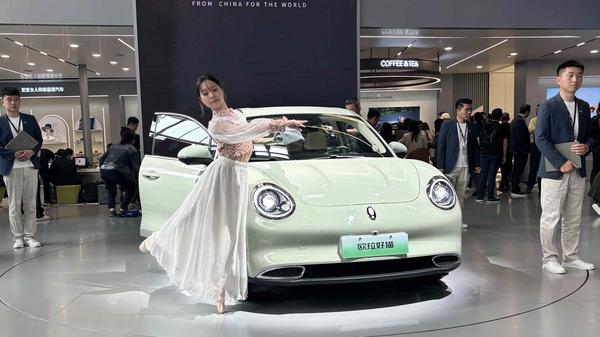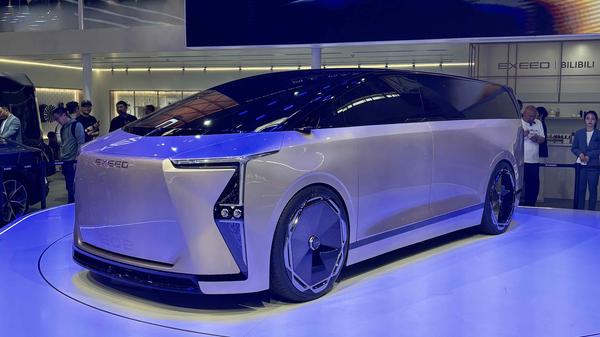News
Beijing Motor Show 2024 - is this the start of Chinese car dominance?
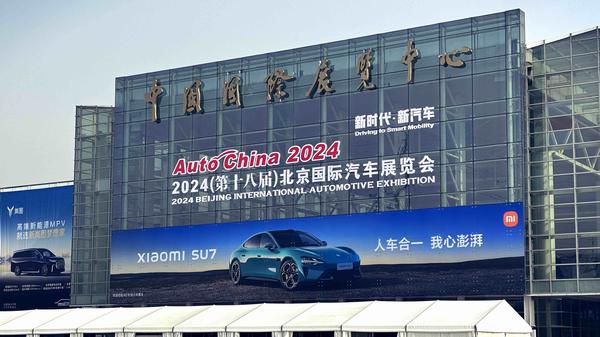

Words by: Mark Nichol
Published on 26 April 2024 | 0 min read
The Beijing Motor Show kicked off today, and arguably marked the beginning of a tangible power shift in the global car market, away from Europe and towards China.
That’s how it seems on the show floor, anyway. The contrast between the bustling enormity of the Beijing Show and the damp squib that was February’s Geneva Motor Show – once the apex of the car calendar – is stark. Chinese brands including Ora, Zeekr, Wey, Tank, Geely, Nio, BYD and myriad others showed off production-ready and concept cars, most of them fully electric, and many of them destined for the UK. Highlights include the Ora 07, a high-quality, high-value rival to the Tesla Model 3 and Hyundai Ioniq 6; and the Zeekr Mix, an electric people carrier in the vein of the Volkswagen ID.Buzz .
That’s how it seems on the show floor, anyway. The contrast between the bustling enormity of the Beijing Show and the damp squib that was February’s Geneva Motor Show – once the apex of the car calendar – is stark. Chinese brands including Ora, Zeekr, Wey, Tank, Geely, Nio, BYD and myriad others showed off production-ready and concept cars, most of them fully electric, and many of them destined for the UK. Highlights include the Ora 07, a high-quality, high-value rival to the Tesla Model 3 and Hyundai Ioniq 6; and the Zeekr Mix, an electric people carrier in the vein of the Volkswagen ID.Buzz .

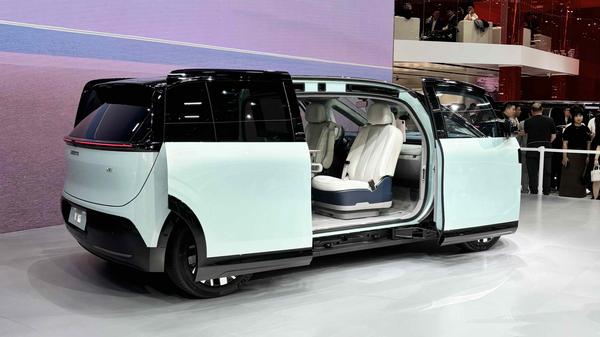
Ora, a brand that entered the UK market in 2021, is owned by Chinese conglomerate Great Wall Motors (GWM), whose other brands include Wey, Tank and Haval. GWM is a case-in-point on how important Chinese cars are becoming in Europe – and how rapidly growth is happening. Established in the late 80s, GWM may be a baby in relative terms to European brands but has exceeded one million car sales per year for the last seven years, and last year sold 300,000 vehicles outside China across its portfolio.
It's done that by developing cars specifically for Europe, particularly the Ora and Wey brands, and establishing supply chains and production in 170 countries globally. It’s also partnered with BMW; the Ora 07 shares some of its electric drivetrain and development with the new MINI. But to say that Chinese dominance in Europe is a given is perhaps a little premature. ‘Legacy’ brands like MINI, BMW, Nissan, Mercedes-Benz, Honda and Volkswagen showed some stunning new cars in Beijing. MINI unveiled the new Aceman, a small electric SUV; Volkswagen’s ID Code is a small electric crossover SUV aimed squarely at younger buyers, including fully autonomous driving tech; Smart showed off the #5 Concept, an electric crossover with off-road vibes and space for five.
It's done that by developing cars specifically for Europe, particularly the Ora and Wey brands, and establishing supply chains and production in 170 countries globally. It’s also partnered with BMW; the Ora 07 shares some of its electric drivetrain and development with the new MINI. But to say that Chinese dominance in Europe is a given is perhaps a little premature. ‘Legacy’ brands like MINI, BMW, Nissan, Mercedes-Benz, Honda and Volkswagen showed some stunning new cars in Beijing. MINI unveiled the new Aceman, a small electric SUV; Volkswagen’s ID Code is a small electric crossover SUV aimed squarely at younger buyers, including fully autonomous driving tech; Smart showed off the #5 Concept, an electric crossover with off-road vibes and space for five.
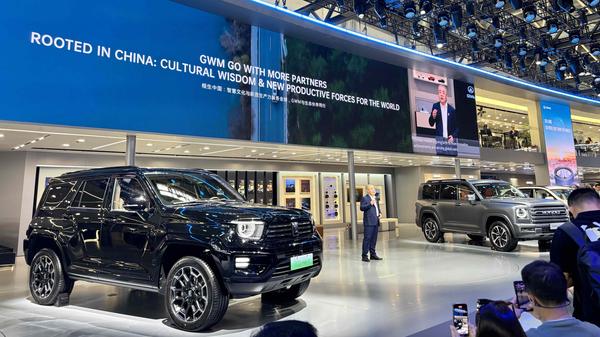
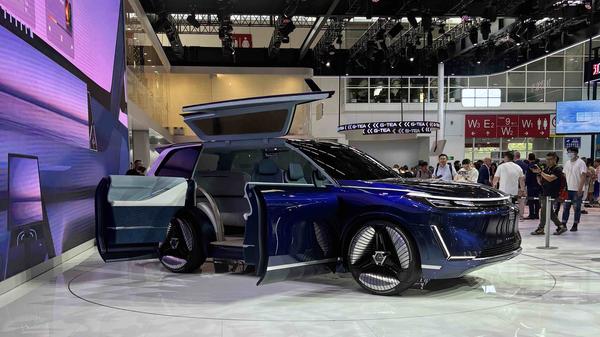
In virtually every case, though, the theme in Beijing was electric mobility and connectivity; the average age of a car buyer in China is just over 30, some 20 years younger than in Europe. Many of the cars in Beijing – whether Chinese, European or Japanese – reflect a youthful approach. Interior screens are getting bigger (often stretching the length of the dashboard), and next-gen exterior lighting is now a proper extension of the car’s ‘personality’ – animated logos, words and even animals in the headlamps and taillights.
The old language of “driving comfort” or “sporty handling” or “smooth transmissions” has gone by the wayside, replaced by “app connectivity” and “powered by AI”; a new SUV called the Jiyue 01 claims to be an “AI-powered” electric SUV and features a 6K resolution 36-inch screen across the dashboard, controlled by an NVIDIA graphics chip.
The old language of “driving comfort” or “sporty handling” or “smooth transmissions” has gone by the wayside, replaced by “app connectivity” and “powered by AI”; a new SUV called the Jiyue 01 claims to be an “AI-powered” electric SUV and features a 6K resolution 36-inch screen across the dashboard, controlled by an NVIDIA graphics chip.
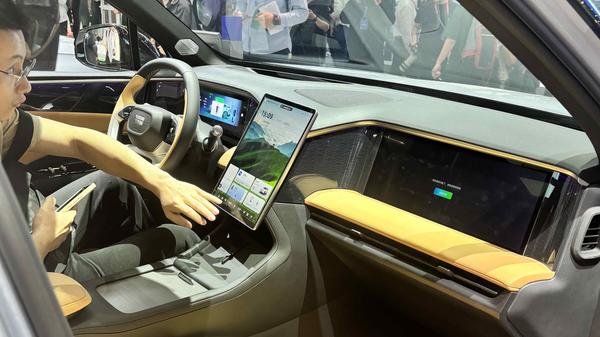

But it’s not plain sailing for the Chinese brands, in the UK at least. Ora, which launched the Funky Cat EV in 2021 (now the Ora 03), still describes the car as “niche”, having sold fewer than 3,000 units in that time. And that’s despite putting a huge amount of money behind the car to prop up extremely cheap lease deals. The 03 is currently available for less than £200 per month on a lease deal, with less than £2,000 up front – an amazing deal, but one that Ora admits is loss-making for the company, because it’s more important just to get the cars on the road at this stage.
Speaking to us about Ora’s approach to its cars at the Beijing show, Ora European Brand and Marketing Director Thiemo Jahnke said, “What matters [now] is design, connectivity… can you play PlayStation games inside? It’s a huge difference. “One thing is clear though, any Chinese brand coming to Europe is going to be a marathon, not a sprint. It’s going to be a volume game. If you’re not prepared and geared up to ramp up your volume to a certain threshold, the likelihood is you’re not going to survive.” To achieve this, GWM will almost certainly bring the Wey brand to the UK soon, which specialises in plug-in hybrid vehicles – albeit wrapped in SUV body styles that are quite old-school by the standards of the Beijing Motor Show floor. The Wey 03, for instance, is a Nissan Qashqai-sized plug-in crossover with a 90-mile electric-only driving range – better than any plug-in currently on the market – and a 0-62mph time of five seconds. These numbers, plus qualities like its “comfortable and efficient nine-speed gearbox”, and its “high towing capacity” are the things that GWM are emphasising as its strengths – ‘traditional’ things, ironically enough. “[Profit] margins in electric cars are small – right now they are negative – and that’s why we are certainly considering bringing internal combustion vehicles [into Europe] and we’re also considering local European production,” says Jahnke. That strategy demonstrates how serious GWM is about getting cars on the road in Europe, gaining brand recognition to pave the way for high-volume EV sales long before the petrol and diesel car sales ban in 2035. Other Chinese car companies could do the same thing. Whatever the roadmap for the Chinese companies, the Beijing show demonstrates that the automotive landscape is shifting. Brands like Ora, Zeekr, Wey, Nio, Xceed, Denza, Lynk and Co, BYD, Arcfox, and more yet to exist… they’ll be as familiar as Audi, BMW and Nissan. Probably. Interesting times.
Speaking to us about Ora’s approach to its cars at the Beijing show, Ora European Brand and Marketing Director Thiemo Jahnke said, “What matters [now] is design, connectivity… can you play PlayStation games inside? It’s a huge difference. “One thing is clear though, any Chinese brand coming to Europe is going to be a marathon, not a sprint. It’s going to be a volume game. If you’re not prepared and geared up to ramp up your volume to a certain threshold, the likelihood is you’re not going to survive.” To achieve this, GWM will almost certainly bring the Wey brand to the UK soon, which specialises in plug-in hybrid vehicles – albeit wrapped in SUV body styles that are quite old-school by the standards of the Beijing Motor Show floor. The Wey 03, for instance, is a Nissan Qashqai-sized plug-in crossover with a 90-mile electric-only driving range – better than any plug-in currently on the market – and a 0-62mph time of five seconds. These numbers, plus qualities like its “comfortable and efficient nine-speed gearbox”, and its “high towing capacity” are the things that GWM are emphasising as its strengths – ‘traditional’ things, ironically enough. “[Profit] margins in electric cars are small – right now they are negative – and that’s why we are certainly considering bringing internal combustion vehicles [into Europe] and we’re also considering local European production,” says Jahnke. That strategy demonstrates how serious GWM is about getting cars on the road in Europe, gaining brand recognition to pave the way for high-volume EV sales long before the petrol and diesel car sales ban in 2035. Other Chinese car companies could do the same thing. Whatever the roadmap for the Chinese companies, the Beijing show demonstrates that the automotive landscape is shifting. Brands like Ora, Zeekr, Wey, Nio, Xceed, Denza, Lynk and Co, BYD, Arcfox, and more yet to exist… they’ll be as familiar as Audi, BMW and Nissan. Probably. Interesting times.
